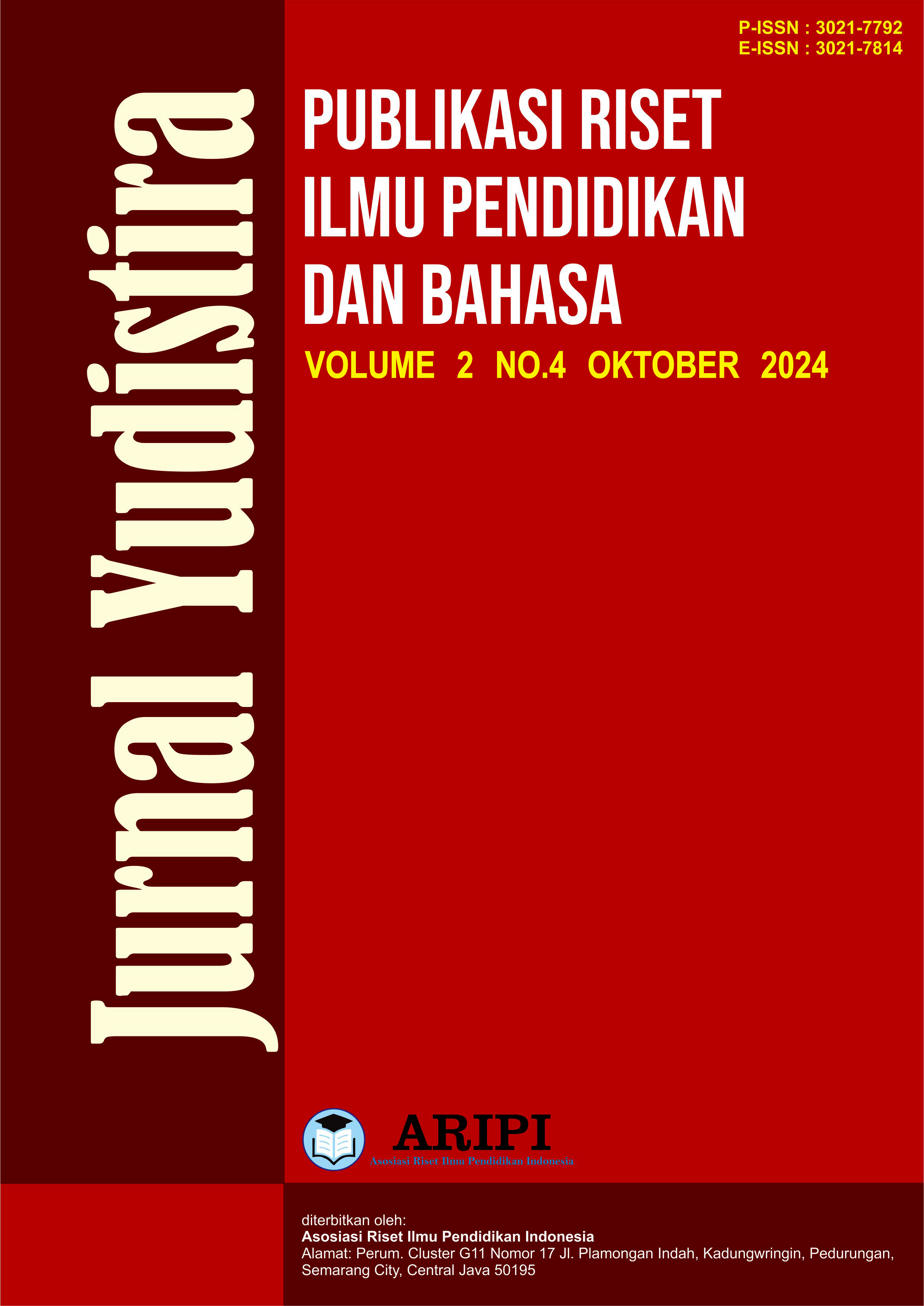Studi Linguistik Tentang Tindak Tutur Ilokusi Asertif dan Konstruksi Berita Tiktok di Liputan 6 SCTV
DOI:
https://doi.org/10.61132/yudistira.v2i4.1167Keywords:
assertive illocutionary acts, TikTok news, news construction, social mediaAbstract
This study analyses the use of assertive illocutionary acts in TikTok news produced by Liputan 6 SCTV and explores the news construction strategies within this short video format. In the current digital era, social media platforms such as TikTok play an increasingly important role in information dissemination, particularly among younger and more dynamic audiences. Assertive illocutionary acts, which function to convey information with firmness and confidence, are effectively used in TikTok news to ensure that the messages communicated are clear and unambiguous. This research employs a qualitative approach, using data collection techniques including observation and content analysis, as well as interviews with relevant journalists. The findings reveal that Liputan 6 SCTV utilises engaging visual elements and concise narratives to deliver news effectively within the constraints of short video formats. While this strategy enhances audience engagement, it also presents challenges related to the limited space for in-depth explanation. Comparisons with previous studies indicate that although the approach on TikTok aligns with modern communication trends, there are significant differences in news delivery techniques compared to other platforms such as YouTube or Instagram. This research contributes to illocutionary theory and social media studies by providing insights into the adaptation of language and news format within the dynamic context of social media. Recommendations for future research include exploring the use of illocutionary acts on other platforms and applying mixed-methods approaches to gain a more comprehensive understanding.
Downloads
References
Austin, J. L. (1962). How to do things with words. Harvard University Press.
Brown, G., & Yule, G. (1983). Discourse analysis. Cambridge University Press.
Brown, G., & Yule, G. (2023). Discourse analysis. Cambridge University Press.
Chen, A., & Burgess, J. (2024). The rise of TikTok as a news source: Implications and trends. Digital Media Review, 18(1), 4560.
Creswell, J. W., & Poth, C. N. (2023). Qualitative inquiry and research design: Choosing among five approaches (5th ed.). Sage Publications.
Denzin, N. K., & Lincoln, Y. S. (Eds.). (2023). The SAGE handbook of qualitative research (5th ed.). Sage Publications.
Gee, J. P. (2023). How to do discourse analysis: A toolkit. Routledge.
Kumar, A., & Ghosh, S. (2023). Social media and news dissemination: New trends and implications. Routledge.
Liputan 6 SCTV. (2024). [Video berita tentang banjir Jakarta]. TikTok. Retrieved from [URL].
Mason, J. (2024). Qualitative researching (3rd ed.). Sage Publications.
Montgomery, K. (2023). Interactive features of TikTok and their impact on news engagement. Journal of Digital Communication, 16(2), 102118.
Newman, N., Fletcher, R., Schulz, A., Andi, S., & Nielsen, R. K. (2024). Digital news report 2024. Reuters Institute for the Study of Journalism.
Searle, J. R. (1969). Speech acts: An essay in the philosophy of language. Cambridge University Press.
Searle, J. R. (2024). Speech acts: An essay in the philosophy of language. Cambridge University Press.
Smith, R., & Zhao, L. (2024). Digital media and communication: Theoretical and practical perspectives. Oxford University Press.
Sutanto, M. (2024). Media adaptation and audience engagement on TikTok: A case study of Liputan 6 SCTV. Media Studies Journal, 12(3), 4560.
Zeng, Q., Wang, J., & Li, X. (2023). The impact of TikTok on modern communication practices. Springer.
Downloads
Published
How to Cite
Issue
Section
License
Copyright (c) 2024 Jurnal Yudistira : Publikasi Riset Ilmu Pendidikan dan Bahasa

This work is licensed under a Creative Commons Attribution-ShareAlike 4.0 International License.






